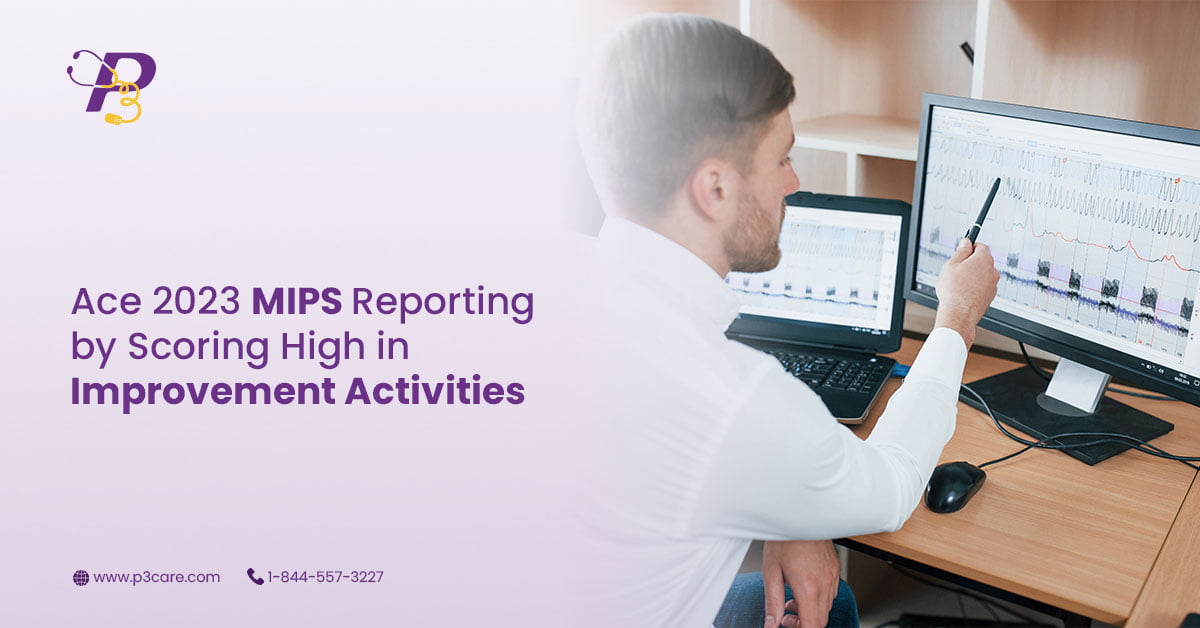What are Significant Requirements to become a QCDR in MIPS reporting?
The MIPS program met with a valuable reporting tool known as QCDR in its quest for relatively accurate reporting. The Qualified Clinical Data Registry (QCDR) acts as a collection type for reporting MIPS quality measures. Mainly, these are the CMS-approved entities that collect and report clinical data from myriad resources. The resources can be electronic health records, patient surveys, and claims data. Overall, they facilitate eligible clinicians’ MIPS reporting.
As we know, it’s time to self-nominate the QCDRs for the MIPS 2024 performance year. So, before doing so, one must have some brief information about it. Therefore, in this blog, we will be discussing the key requirements for a QCDR in MIPS reporting. Now, let’s begin!
QCDR and QR are Not the Same
Before moving to the main topic, please clarify one of the biggest confusions about QCDR. People often have the misconception that qualified registries (QR) and Qualified Clinical Data Registry (QCDR) are the same. Rather, they are not the same, but they are related to one another to some extent. Both are CMS-approved vendors or MIPS-qualified registries, but QCDR is a little different.
- QCDRs are entities with quality measurement development experience, but QRs lack this.
- In the same way, QCDR can self-nominate almost 30 quality measures that are not on the annual list of MIPS quality measures.
Thus, the QCDRs have a distinct advantage over traditional MIPS reporting methods. Through its specialized measures, it allows clinicians to report data that reveals their practice patterns.
Focal Criteria: How to Be a QCDR in MIPS Reporting
CMS provides a wide set of guidelines and requirements for becoming a QCDR. Here, we will check out all these requirements one by one.
Participants Required
The QCDRs have a deadline of January 1 before the beginning of the applicable performance period. They have to form an aggregation of at least 25 participants. Otherwise, we consider them non-compliant for MIPS reporting.
Certification Statement
QCDRs submit data to CMS on behalf of clinicians, groups, virtual groups, subgroups, and/or APMs. Opt-in and voluntary participants are also included in it.
Here, a QCDR must ensure that the data they are submitting is authentic and accurate. Moreover, if false or incorrect data is submitted, the QCDR must act on it. Therefore, they must submit the correct data asap before the end of the submission period. The QCDR may find out about the inaccuracy of reported data after the submission period closes. Anyhow, they must immediately inform CMS about this event.
Data Submission
CMS strictly emphasizes data submission using CMS-specified secure methods. Moreover, it has provided detailed insights in the developer tool section of the QPP website for this. As per the PFS final rule for PY 2023, the QCDRs, QRs, and IT vendors can all submit data for the following MIPS categories:
- Quality (excluding The CAHPS for the MIPS Survey and, for qualified registries and health IT vendors, the QCDR measures)
- Improvement activities (IA); and
- Promoting Interoperability (only if the participants are using CEHRT)
Data Validation Plan and Targeted Audits
Data validation is an annual approval process during the self-nomination period. Afterward, the QCDRs can’t change it during the performance year without the CMS’s permission. In other words, data validation of QCDRs must be done before the data submission via MIPS, MVPs, and APPs for PY 2024.
The data validation must cover everything.
- Collection types (MIPS CQMs, eCQMs, and QCDR measures)
- Performance categories (quality, improvement activities, Promoting Interoperability);
- Choices for reporting include regular MIPS, MVPs, and APP, while participation options include MIPS-eligible clinicians, groups, virtual groups, subgroups, or APM entities.
You must use clinical documentation (provided by the clinicians for whom you’re submitting data) to validate that the action or outcome measured occurred or was performed. In addition, every data validation audit must contain the following:
- Eligibility status verification for each participant
- TIN and NPI verification
- Calculation of reporting and performance rates.
- Verification of using only the relevant MIPS quality measures, IAs, PI measures and objectives, and QCDR measures
Thus, For the 2024 MIPS performance period, this implies:
- 2024 MIPS CQMs, eCQMs, and/or QCDR measures for the quality category
- 2024 PI measures and objectives for the Promoting Interoperability category
- 2024 IAs for the improvement activities performance category
Data Validation Audits (Randomized Audit)
The method of sampling must meet a certain standard. All performance categories (standard MIPS, MVP reporting, and APP) for which you will submit data must meet these requirements. The requirements are as follows:
- 3% of the TINs and NPIs reported to CMS should constitute the minimum sample size. The sample, however, must have at least 10 TINs or NPIs and shouldn’t include more than 50 TINs or NPIs.
- Each patient connected with a TIN or NPI in the sample must account for at least 25% of the total patients in the sample. However, the sample size should not be greater than 50 patients. Also, it should consist of at least five individuals.
Targeted Audits (Detailed Audits)
Such audits are performed if a data validation audit finds any deficiencies or data errors. It is crucial to use a sample approach for the targeted audit that satisfies the standards for data validation audits. Additionally, the sample used for the targeted audit shouldn’t include any information from the original data validation audit that revealed any flaws or inconsistencies.
Performance Category Feedback Reports
QCDRs must submit their performance category feedback at least four times a year. CMS asks them to offer specific feedback to clinicians, groups, virtual groups, subgroups, and APM Entities. For this, QCDRs will compare their performance to other participants taking part in MVPs, APPs, or MIPS reporting.
CMS does not provide a standard template for performance feedback reports. In cases where clinicians have access to a real-time feedback dashboard, QCDRs are expected to send reminders at least four times a year. By doing so, they will be notifying them that the feedback is available.
Attestation
Verify that you are familiar with the program’s requirements and QCDR qualifying standards. Also, you guarantee compliance with all program requirements.
Conclusion
In summary, both qualified registries and QCDRs serve as data collection and analysis tools for clinical information. However, QCDRs offer a more specialized and comprehensive approach. They can capture detailed clinical information that goes beyond specific quality measures. Thereby, they enable in-depth analysis and research within specific medical specialties or areas of clinical practice.
Unlike MIPS, which follows a predefined set of quality measures, QCDRs provide a little flexibility. Healthcare organizations can choose and report on measures that align with their clinical specialty or areas of focus with QCDR. When a healthcare organization or medical specialty society intends to establish a QCDR, they have the opportunity to self-nominate quality measures. They go with the measures that are relevant to their specialty or clinical practice.
Thus, they can propose and submit their own set of quality measures for evaluation and approval by the CMS. That’s all about the QCDRs in MIPS reporting. For further information about self-nomination as QCDR, you can consult Our experts will help you out with their MIPS consulting services.














Leave a Reply
Want to join the discussion?Feel free to contribute!